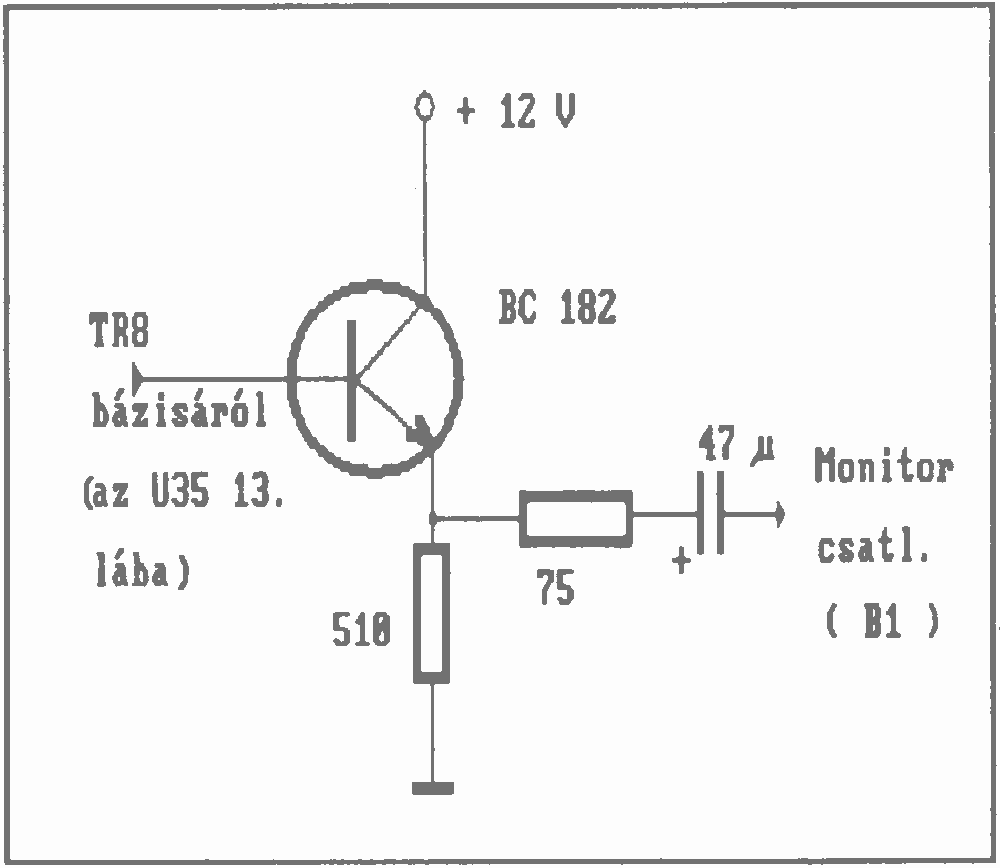Composite color video out
Composite color video out
As known, our computer has "only" professional outputs for the monitors: an analogue RGB for the colour monitors and a monochrome composite signal for the B&W ones.
Other alternative is using the built-in UHF modulator. But this has drawbacks: as long as you use the television for displaying the UHF signal, the resolution gets notably worse and worse and you are constrained to fine tune the TV, as the RF modulator built in the computer isn't famous for its stability.
Nowadays there are many TVs containing (baseband) video input and there are many monitors which are able to receive video signal only. (Not to mention the VCRs.) The emitter follower in question makes it possible to connect the Enterprise to them. It can be built into the machine and the colour PAL video signal can be led out of the computer through an empty connector pin.
The signal containing the colour information can be taken from the base of the transistor represented on the original circuit diagram "TR8 (2N3904)". The composite video signal present here is generated by the integrated circuits "U34 (LM1886)" and "U35 (LM1889)". The one-stage transistor amplifier to be built-in can be seen in picture 1.
Now we are going to review how to build in the emitter (follower?). This work is recommended only for those who are expert in electronic tinkering. Not having the suitable tools (for example to do the accurate soldering) many sources of failure can be built into the machine disassembling and reassembling it. First of all, remove all the plugs from the machine and the BASIC cartridge from the left side of the computer. Screw off the 14 (kereszthornyú?) screws at the bottom. The keyboard can be removed by carefully tipping it over (?). Now the transparent folder of the funtion keys' label can be removed. Slip the upper housing (burkolat?) progressively (fokozatosan?), slowly up in more places (?). Lift it down carefully because the foil cable can break. Remove the foil from the two connectors on the motherboard.